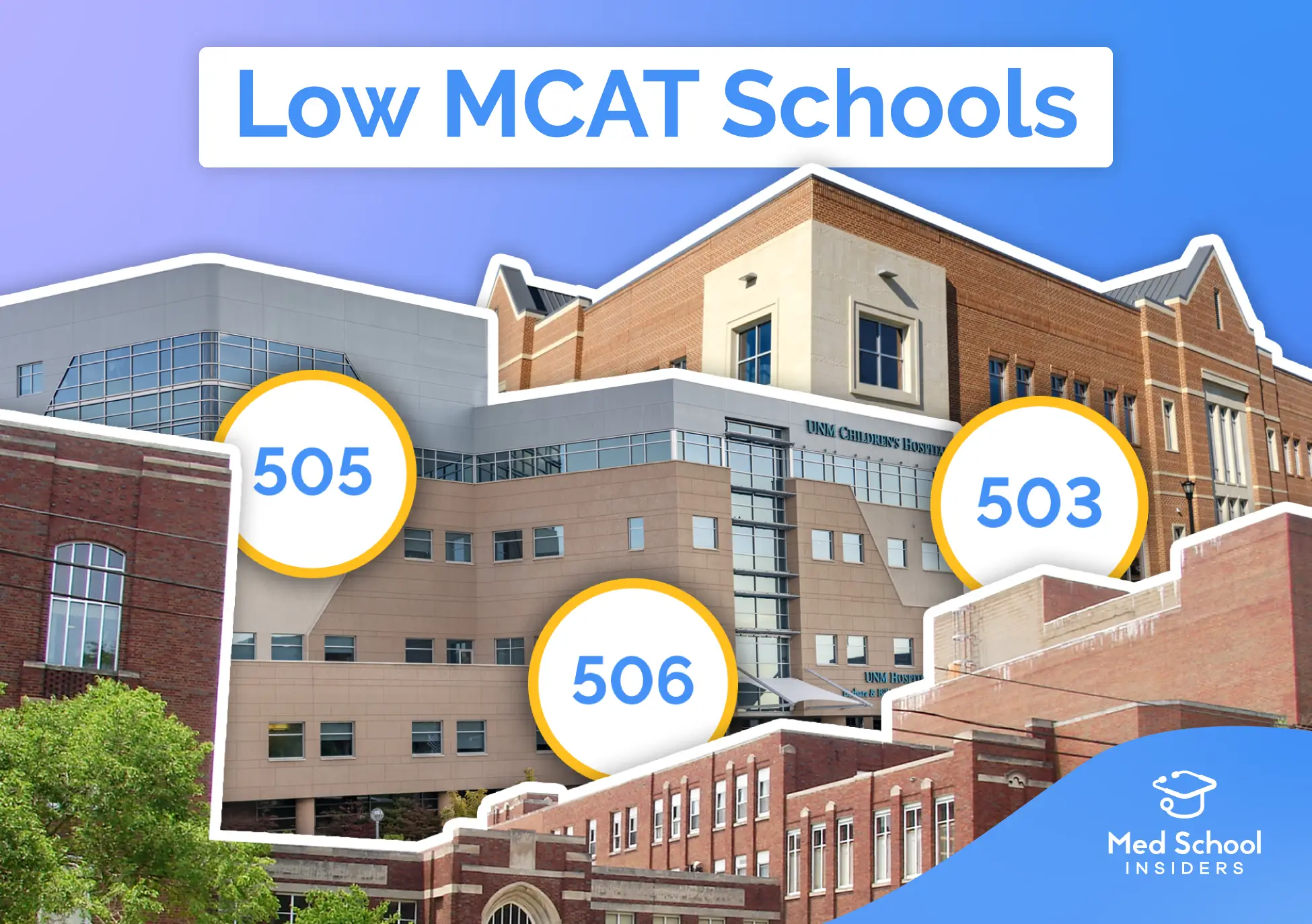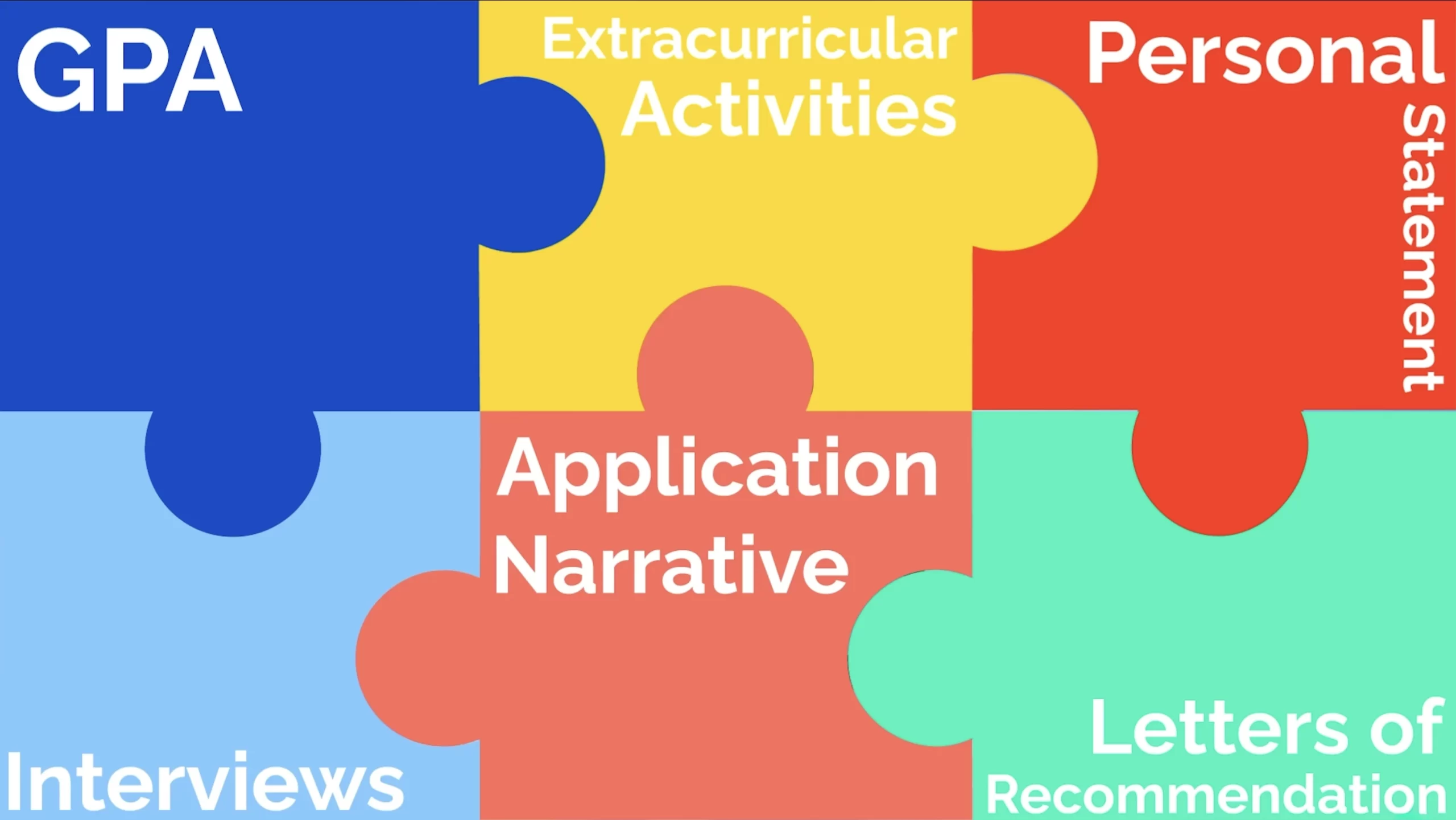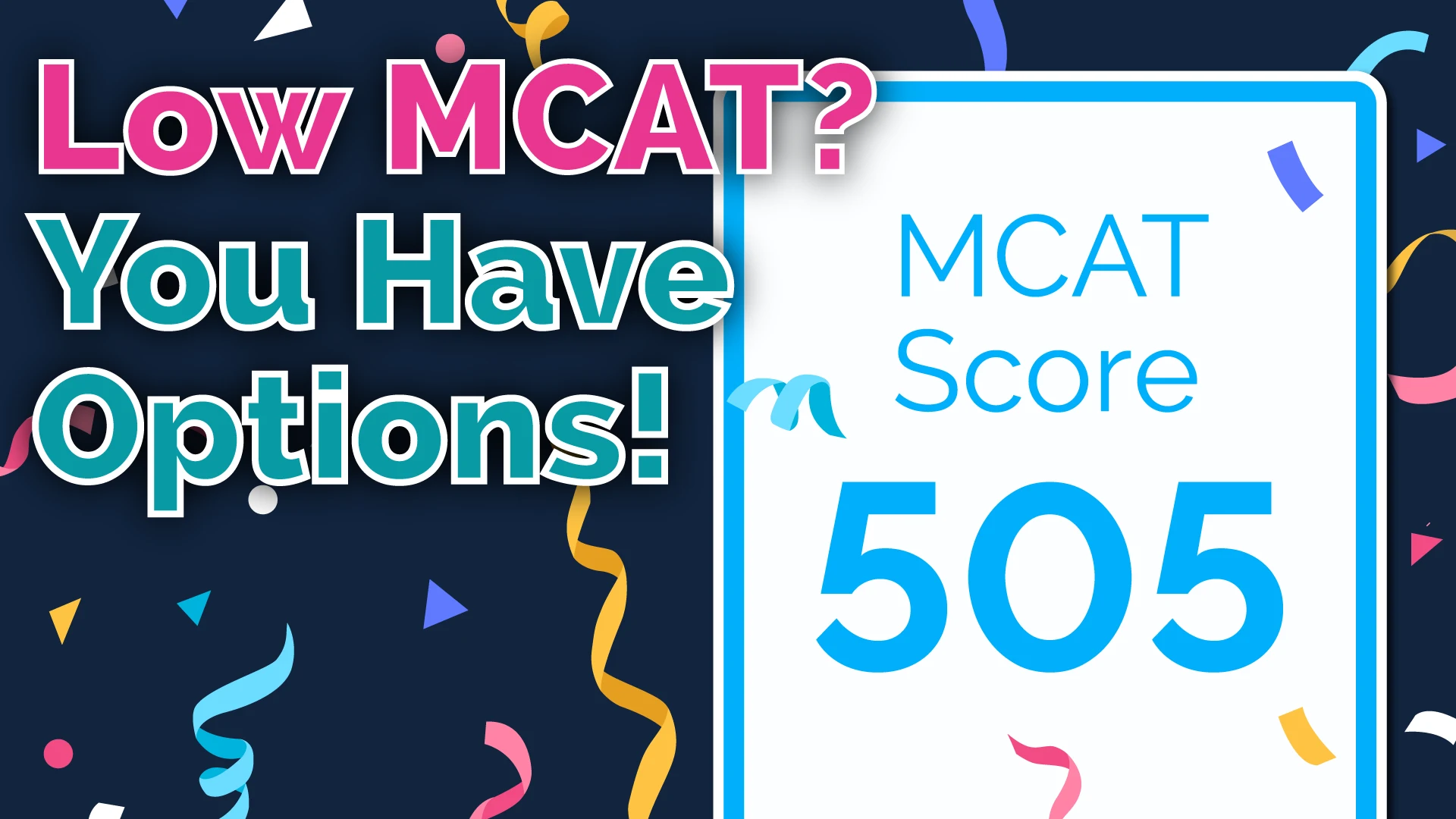How Much Do Doctors Actually Make?
Stop relying on the average doctor salary. We break down the pay difference between specialties and how RVUs & procedures impact your compensation.

Worried your MCAT score is too low for medical school? Don’t panic just yet.
The MCAT is a 7.5-hour marathon that could determine your future in medicine before it’s even begun. All that preparation, all that sacrifice—all for a three-digit number. And when that number isn’t what you wanted it to be, it can feel devastating, like the ground has just dropped out from under you.
But if you have a low MCAT, all hope is not lost. Below, we’ll share the eight medical schools with the lowest median MCAT score.
But first, how much does your MCAT score actually determine whether or not you get into medical school?
The MCAT is certainly important—it’s designed to test your scientific knowledge and critical thinking abilities under pressure. Admissions committees value it as a hard metric to gauge whether or not students can handle the rigors of medical school.
But the MCAT is just one piece of a much larger puzzle. Your GPA, extracurricular activities, personal statement, letters of recommendation, application narrative, and interviews all play crucial roles in painting a complete picture of who you are as an applicant.

It’s completely possible to get into medical school with a lower MCAT score. In fact, the median scores we’ll be sharing today are just that—the middle of the pack for these low MCAT schools. This means many students who were accepted scored even lower and still received that coveted acceptance letter.
A lower MCAT score doesn’t mean you’ll be a bad medical student or physician. But it’s important to keep in mind that this isn’t the last test or major exam you’ll take. Medical school is filled with high-stakes exams, culminating in the USMLE Step exams, which are even longer marathons of tests that make the MCAT look like a warm-up.
USMLE Step 2 CK, for example, is a mammoth nine-hour test that will determine your residency competitiveness. If you hope to get into a competitive residency program like dermatology, neurosurgery, or plastic surgery, you’ll need to make some serious changes to your study habits and test-taking strategies.
But here’s the good news—if you’re determined to become a doctor, there are medical schools that place less emphasis on MCAT scores and more on other aspects of your application, such as your personal story, perseverance, and research and clinical experience.
Now let’s look at the medical schools with the lowest median MCAT scores for MD matriculants.
Note that this list focuses on allopathic, or MD, med schools only, not osteopathic schools, which typically have notably lower MCAT averages in comparison. For example, the lowest MCAT MD school on this list has approximately the same score as the average MCAT for DO matriculants.

We’re working our way from #8 to #1, but first, as an honorable mention, there are a handful of Puerto Rican schools that had even lower MCAT medians than the US mainland schools on this list, including:
While Puerto Rican schools are also accredited by the LCME, which is the same accrediting body that oversees all other US MD schools, to be successful at these schools, you absolutely must be fluent in Spanish. And we don’t just mean ordering dinner in a restaurant; you must be able to keep up with colleagues in a fast-paced clinical environment.
Additionally, there are typically fewer research opportunities available at Puerto Rican schools, which can hinder your chances of matching at competitive residency programs.
If you’re fluent in Spanish and interested in primary care, medical schools in Puerto Rico—a U.S. territory—are a decent option and a much better choice than attending international Caribbean schools. More on that over on my Kevin Jubbal, M.D. channel, where I break down the regrets even attending physicians have about their choice to train internationally.
To start us off at number 8, the University of Houston Tilman J. Fertitta Family College of Medicine has the eighth-lowest median MCAT at 506. For context, this score is in the 67th percentile, meaning if 100 people took the MCAT, approximately 67 of them would have scored at or below 506.
The school is located in Houston, Texas, the fourth-largest city in the US.
Note that you will need to apply through Texas’s own application system, the Texas Medical and Dental School Application Service, or TMDSAS. This is separate from the standard application service, AMCAS, used by most US medical schools. This means that if you are applying to schools outside of Texas, you will need to use both application services.
But here’s the catch: Only 10% of Texas med school matriculants are from out-of-state. The other 90% are residents of Texas. So if you live out of state, you face an uphill battle. Learn more about your odds of acceptance at specific out-of-state schools using our free Medical School Chance Predictor.
At number 7 is the University of Texas at Tyler School of Medicine, also with a median MCAT of 506.
Situated in Tyler, a mid-sized city of East Texas, this school was specifically founded to address physician shortages in this underserved region.
Being located in Texas, this school also uses TMDSAS, and only 10% of the student body are out-of-state applicants.
At number 6 is Meharry Medical College, also with a median MCAT of 506.
Located in Nashville, Tennessee’s capital city, Meharry is one of the nation’s oldest and most respected historically Black academic health science centers. Founded in 1876 to educate freed slaves, Meharry continues its mission of training students who are underrepresented in medicine.
At number 5 is the University of New Mexico School of Medicine with a median MCAT of 505.
Located in Albuquerque, New Mexico’s largest city, this school emphasizes serving diverse and underserved populations.
You may be sensing a trend here. Typically, schools with lower MCAT thresholds have a focus on primary care and serving underserved communities. These schools need to attract students to address physician shortages and the medical needs of surrounding communities.
Highly competitive applicants have many more options in both schools and specializations. Primary care physicians are compensated less than physicians in other specialties, while facing increased workloads due to physician shortages and increased charting, which contributes to high rates of burnout.
In fact, pediatrics and family medicine rank fourth and fifth, respectively, among the medical specialties with the most burnout.
Even with these notably low MCAT scores, no medical school is easy to get into, and the MCAT is only one small piece of the puzzle. Community-focused schools are looking for a narrative that supports their unique mission in your application. Additionally, most are looking for students who plan to stay and practice in the area in which they are trained.
Learn more about each of these schools and the states they are located in with our State Guide series. These guides cover everything you need to know about living in the state, application requirements, and how to stand out to community-focused schools.
Coming in at number 4 is the University of Mississippi School of Medicine, also with a median MCAT of 505.
It’s based in Jackson, which is the state capital and Mississippi’s most populous city.
Students focus on addressing healthcare disparities in Mississippi’s underserved populations, particularly in the rural Mississippi Delta region. The Delta has some of the nation’s most significant healthcare challenges and some of the highest poverty rates in the United States, making it difficult for residents to afford healthcare services, insurance, and medications.
At number 3 is the Marshall University Joan C. Edwards School of Medicine, with a median MCAT score of 505.
Located in Huntington, West Virginia, this community-based, VA-affiliated institution provides students with exposure to the unique healthcare challenges facing Appalachia, a region characterized by significant healthcare disparities, high rates of chronic disease, and medically underserved communities spread across challenging mountainous terrain.
The number 2 spot goes to Charles R. Drew University in Los Angeles, with a median MCAT of 504.
Located in the Willowbrook neighborhood of South Los Angeles, California, the university sits at the intersection of several historically underserved communities in one of America’s most diverse metropolitan areas.
And finally, at number 1, with the lowest median MCAT score of 503, is Mercer University School of Medicine in Macon, Georgia.
To put things in perspective, the average MCAT score of matriculants to osteopathic medical schools is 503. That’s right at the 58th percentile.
Located about 85 miles southeast of Atlanta, Mercer was established in 1982 and only accepts Georgia residents, with 65% of graduates practicing in-state. The curriculum specifically prepares physicians for rural and underserved areas of Georgia that struggle to attract and retain medical professionals.
A low MCAT score doesn’t mean you’re doomed, but obviously, a higher MCAT score is much more ideal. It provides you with greater optionality, allowing you to choose the school that best aligns with your interests and values, including those with significantly higher median MCAT scores, more resources, and increased residency opportunities.
We’ll show you how to score higher with our free Test-Taking Tactics Cheat Sheet, which distills key tactics and reveals secrets to overcome test-taking anxiety, guess more accurately, and more. We’ve used these exact same strategies to boost our students’ MCAT scores by 15 points.
Stop relying on the average doctor salary. We break down the pay difference between specialties and how RVUs & procedures impact your compensation.

Are you built for the Emergency Department? We reveal the 6 signs that prove you’re destined to succeed in emergency medicine.
With Med School Insiders, you’ll gain access to a streamlined process honed by top-percentile achievers, focusing on quality resources, effective study strategies, and all the many intangibles that influence your performance. Say goodbye to second-guessing and embrace a structured path to MCAT success, underscored by our risk-free trial. Transform your MCAT preparation with our expertly curated content review and tailored guidance.